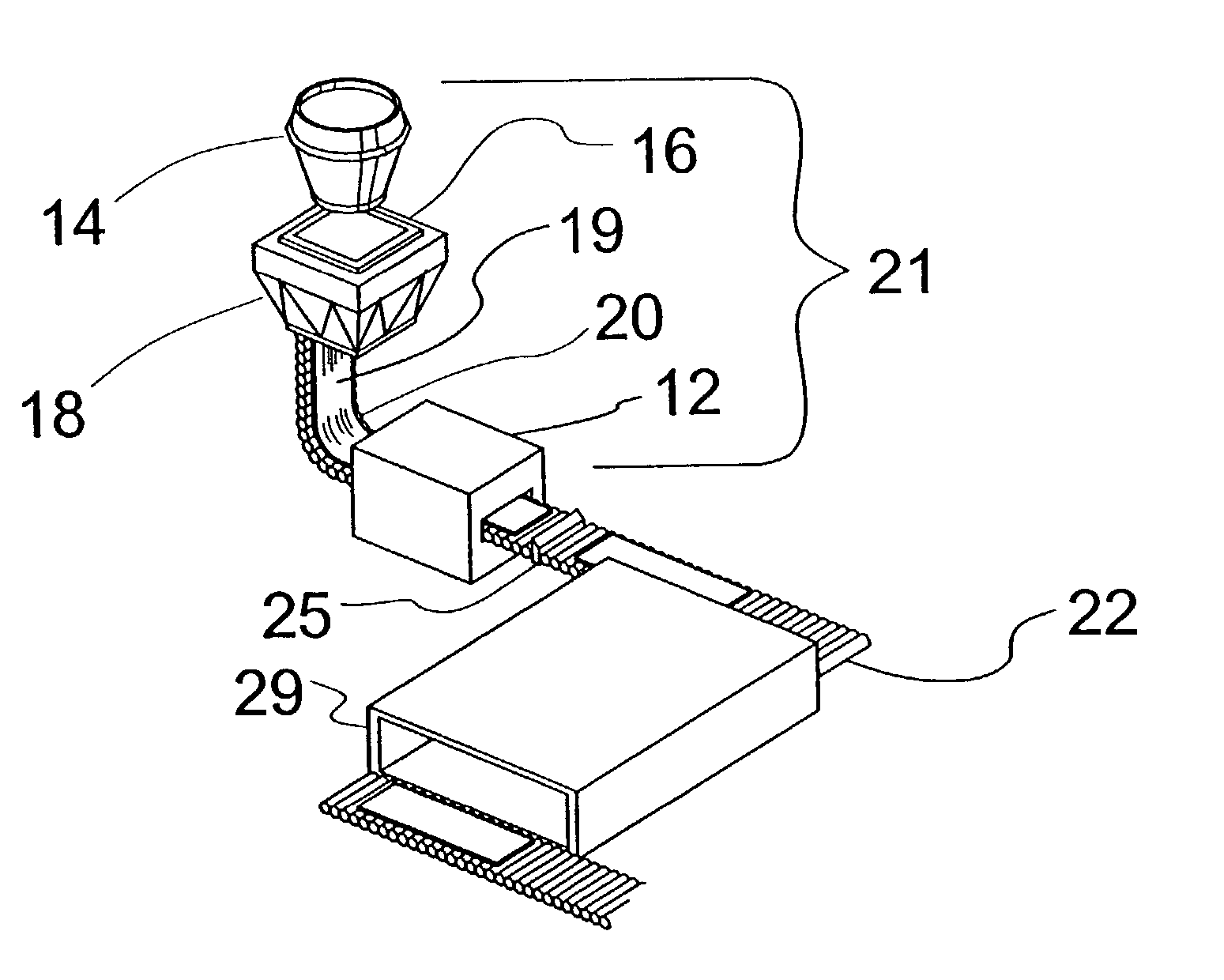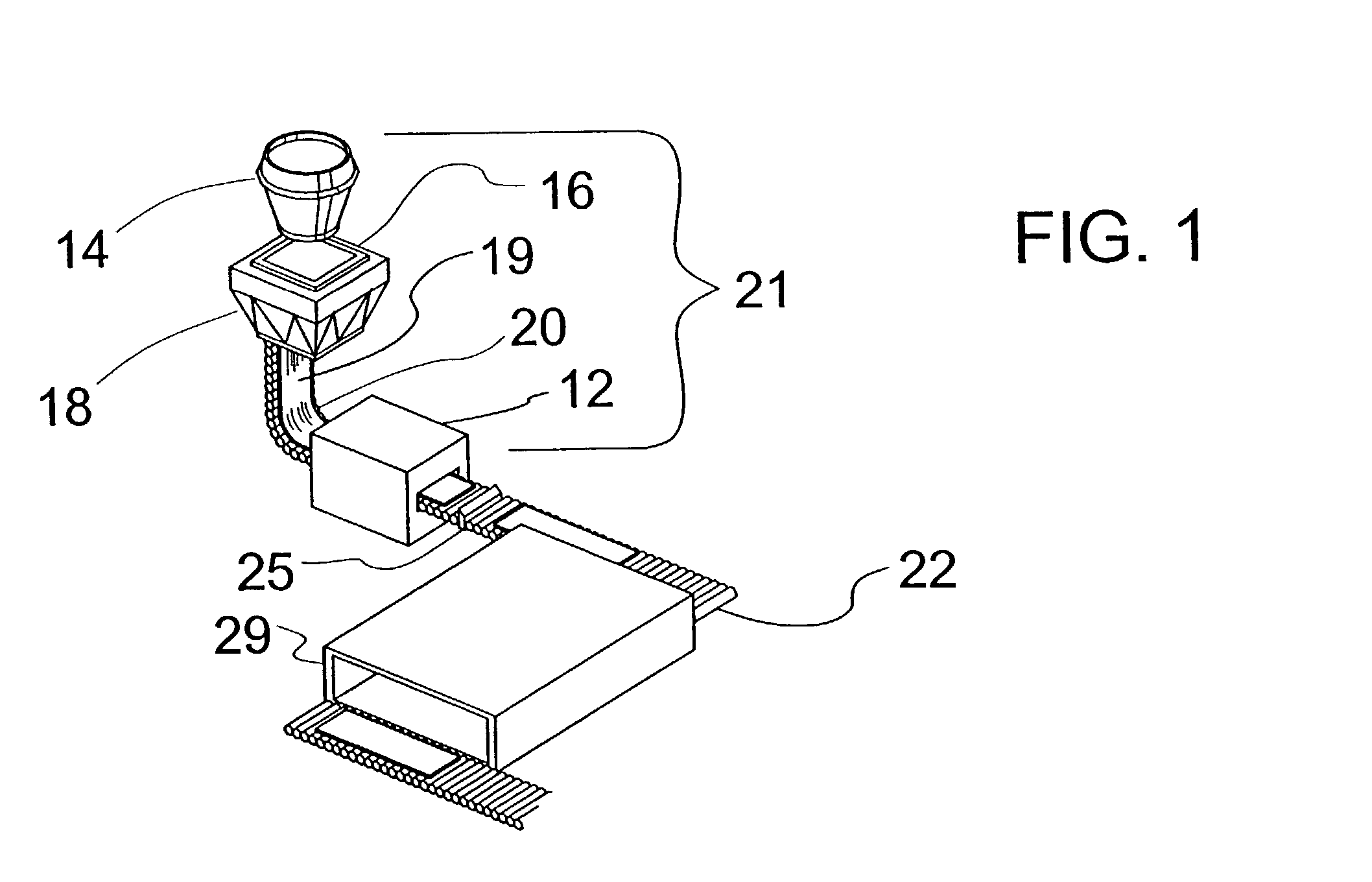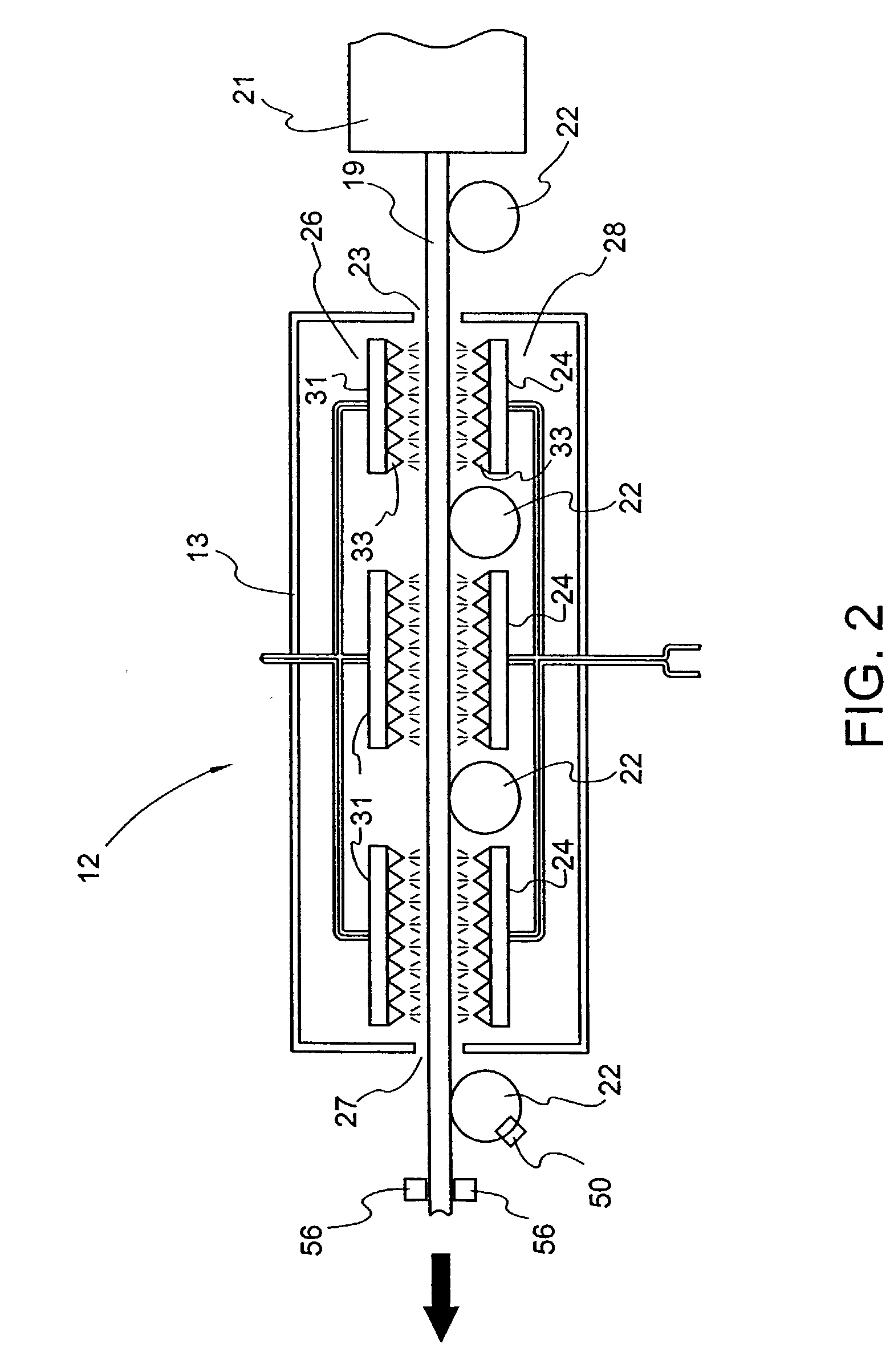Differential quench method and apparatus
- Summary
- Abstract
- Description
- Claims
- Application Information
AI Technical Summary
Benefits of technology
Problems solved by technology
Method used
Image
Examples
first embodiment
[0082] In this embodiment, the longitudinal supply pipes 82 are connected to associated respective water control valves 84a, 84b, 84c and water pressure regulators 85a, 85b, 85c. Similarly, the longitudinal supply pipes are connected to associated respective air control valves and pressure regulators (not shown FIG. 5) In a manner similar to the transverse spray control described in the first embodiment, the control valves 84 and pressure regulators 85 regulate the fluid flow rate and pressure for the three longitudinally spaced banks 76. Such longitudinal control is useful in countering non-uniform longitudinal cooling in the strand, which may for example, be caused by anomalies in the orderly progress of the steel through the caster assembly 21. For example, for a given length of the strand, the leading portion may be at a higher temperature than the trailing portion at a given line location. In this connection, the longitudinal-control array may be programmed to apply a higher in...
example
[0089] Consider a steel casting about 6 inches thick, and of variable width of anywhere between about 40 inches and 125 inches, being produced at normal casting line speeds of anywhere between about 30 inches per minute and 75 inches per minute. Assume that a quench penetration of at least about a half-inch from the surface is targeted, and that the quench will reduce surface temperature of the casting from a temperature of the order of (982.degree. C.) 1800.degree. F. to a temperature of the order of 538-704.degree. C. (1000-1300.degree. F.).
[0090] Engineering considerations, notably the principle of simplification, make it desirable to control nozzles in banks of longitudinally aligned nozzles. Four groups of top nozzle banks can be arrayed over the maximum width of the casting, including:
[0091] first, a central group of at least 1, and perhaps 3 or 5 banks of nozzles;
[0092] second, a mid-inner group comprising, say, 4 banks of nozzles, two on either side of the centre line and ly...
PUM
| Property | Measurement | Unit |
|---|---|---|
| Angle | aaaaa | aaaaa |
| Temperature | aaaaa | aaaaa |
| Length | aaaaa | aaaaa |
Abstract
Description
Claims
Application Information
 Login to View More
Login to View More - R&D
- Intellectual Property
- Life Sciences
- Materials
- Tech Scout
- Unparalleled Data Quality
- Higher Quality Content
- 60% Fewer Hallucinations
Browse by: Latest US Patents, China's latest patents, Technical Efficacy Thesaurus, Application Domain, Technology Topic, Popular Technical Reports.
© 2025 PatSnap. All rights reserved.Legal|Privacy policy|Modern Slavery Act Transparency Statement|Sitemap|About US| Contact US: help@patsnap.com



